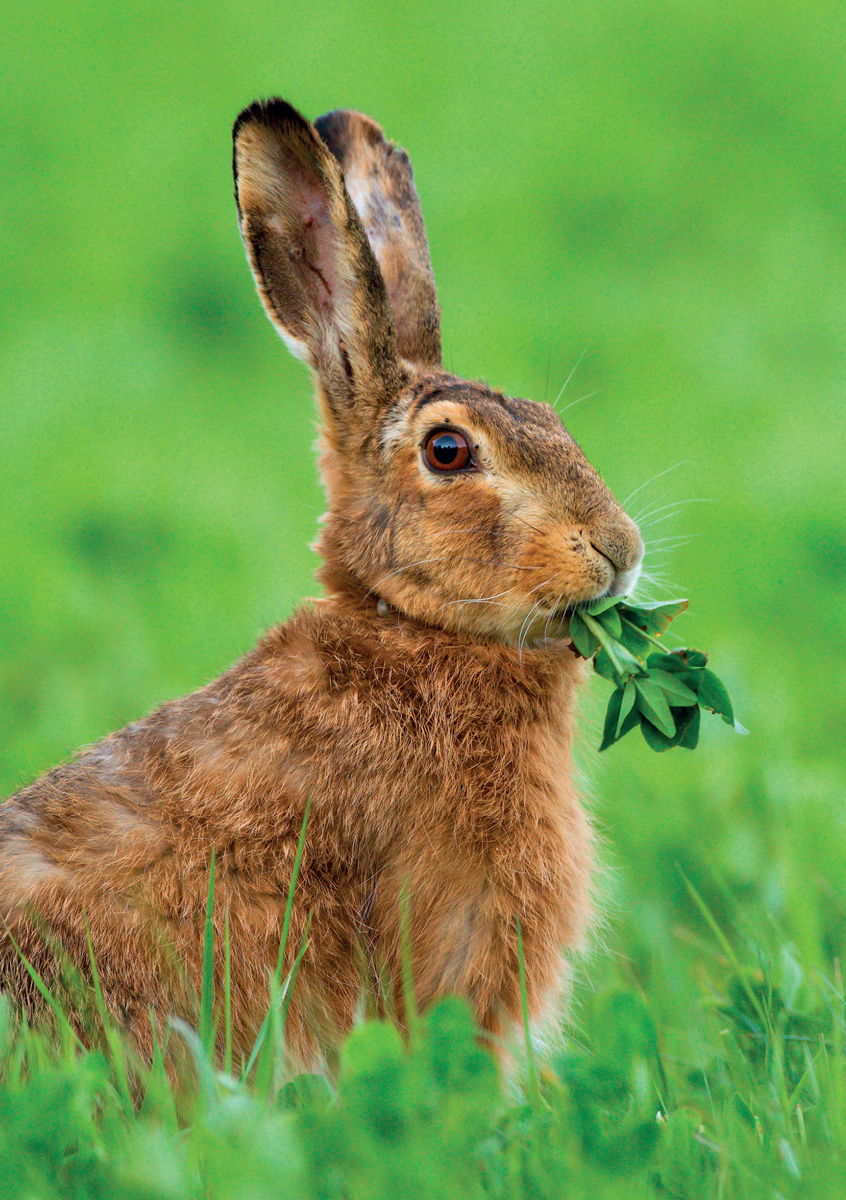
This moulting Brown Hare is eating clover while keeping watch for predators.

This moulting Brown Hare is eating clover while keeping watch for predators.
Eat or Be Eaten
Like most herbivores, hares appear to be surrounded by food that is much easier to obtain than the food of carnivores is. For herbivores, there is no need for tiring, dangerous and potentially unsuccessful hunting. But the apparent easy availability of food plants is deceptive. Hares’ survival depends on them eating high-quality, high-energy food, and they must avoid eating large amounts of low-quality food that would fill them up but slow them down. Many predators are looking out for hares to catch and eat, and hares rely mainly on their speed to avoid being caught.
Food for hares
Brown Hares prefer to eat young, fresh shoots, and diversity is important in their diet, but their main food consists of grasses. They graze selectively on grasses, other herbaceous plants and arable crops (young cereals, in particular wheat, but also maize, peas, beans, sugar beet, and ears of cereals). In pastoral land, hares eat a greater diversity of plants than they do in mixed farmland; their diet is even less diverse in agricultural monocultures. In one study in Sweden, at least 37 different plant species were eaten by Brown Hares in pastoral areas, 30 were eaten by hares in areas of mixed farmland, whereas only 14 were eaten by hares in monocultures. In an arable area of Austria, of the 164 plant species available to them, hares ate 49 and actively selected 11, including crops (soya beans and winter wheat), sugar beet and carrots provided by hunters, and wild plants (e.g. clover and poppy). However, hares in mixed farmland in north Yorkshire relied heavily on three grass species and wheat.
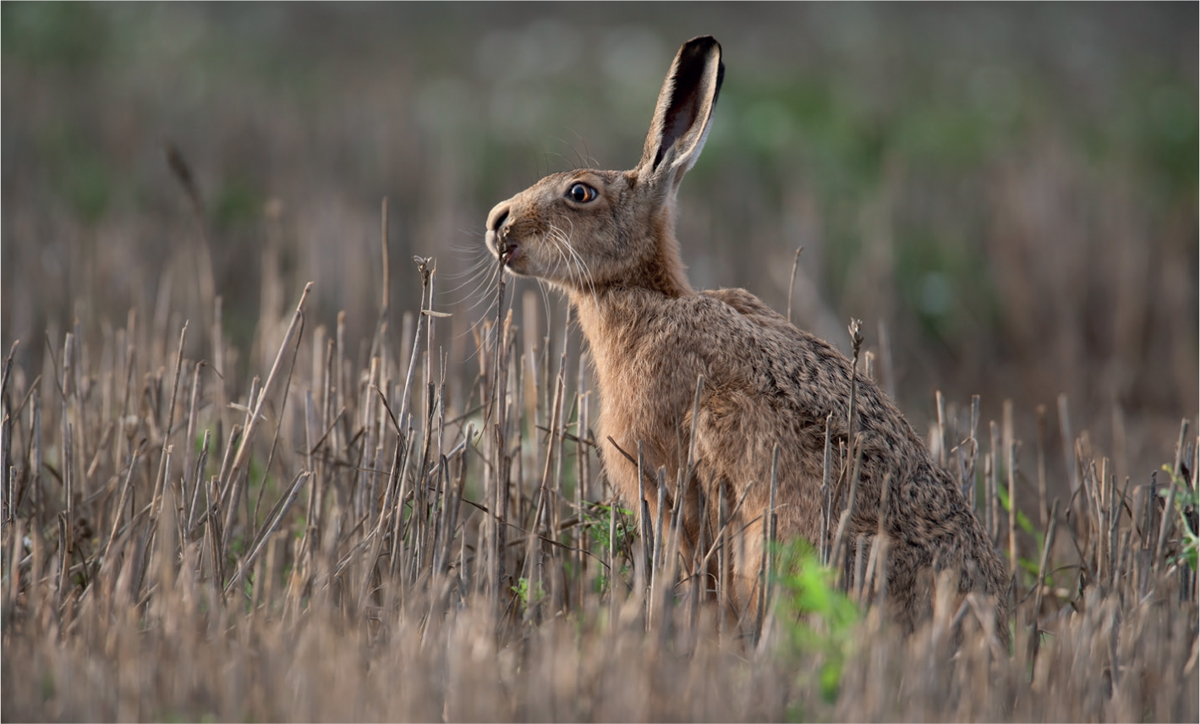
In cereal stubble, hares are likely be be feeding on weeds.

A mixed agricultural landscape offers diverse foods and cover for hares at different times of year.

Monocultures, where only one or very few crops are grown, are not beneficial to hares.
Wild grasses and herbs may be preferred to cereals and other crops, and in France, Field Horsetail is particularly popular in summer. Flowers are also eaten. Grasses form up to 90 per cent of Brown Hares’ diet in winter and are very important to them all year round. In summer, other herbaceous plants form 40–60 per cent of their diet. In winter in some places, cultivated plants are key to survival. Brown Hares living in conifer plantations eat mainly wild grasses, but they may also feed on shrubs and trees, and eat pine needles, particularly if snow makes grazing difficult.

This Mountain Hare is nibbling at the fresh shoots of heather, its main winter food. It is watching out for danger while it eats.
Mountain Hares in Scotland have a slightly more ‘woody’ diet: they eat mostly heather in winter and grasses (their preferred food) in summer. They also eat clover, willow, rushes, sedges, Crowberry, birch, poplar, pine, Juniper, Dog Rose and lichens. They sometimes use their forepaws to dig through a layer of snow to reach heather, and often feed with their backs to the wind. Irish Hares eat mainly grasses; their diet is similar to that of the Brown Hare.

This Mountain Hare’s food, heather, is covered with a layer of snow, making feeding difficult and energetically costly.
In terms of energy from their diet, wild Brown Hares in East Anglia, eastern England, are estimated to need 2,310kJ (552kcal) per day in summer, and 2,835kJ (678kcal) per day in winter. For comparison, men need to consume around 10,500 kJ (2,510kcal) and women 8,400 kJ (2,010kcal) daily to maintain a stable body weight. So a human, weighing on average about 20 times as much as a hare, needs about three or four times as much fuel as a hare. Hares are very active, and partly due to their small size, need a lot of energy to keep warm.
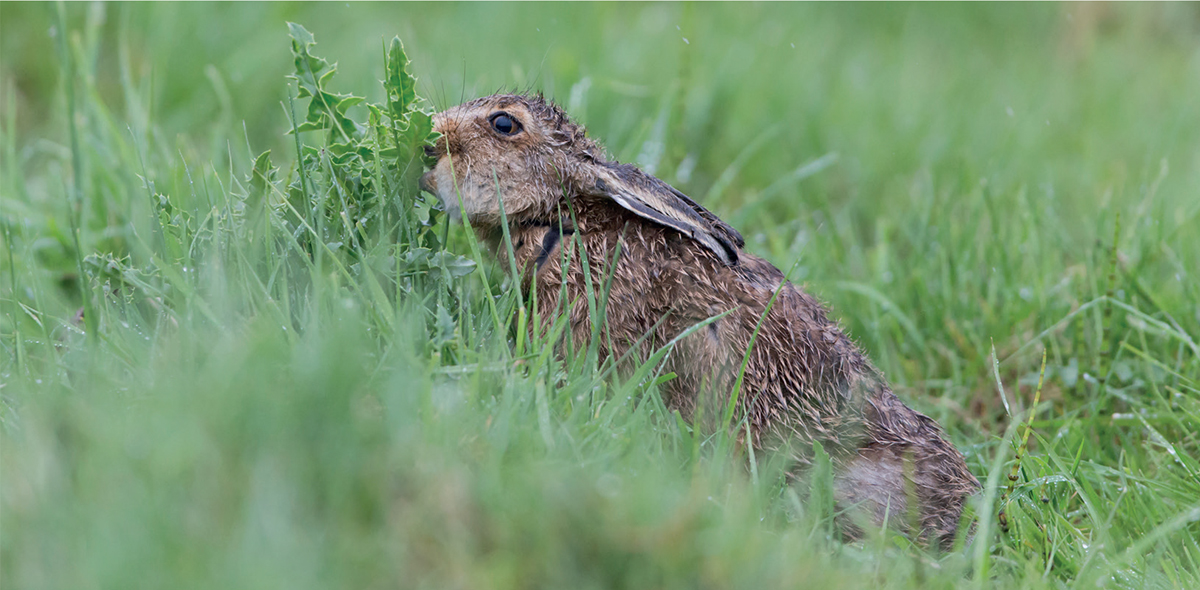
Brown Hares are selective feeders, searching out the best quality plants.
How do we know what hares eat?
Hares are secretive animals that forage mostly at night, making close observation of their feeding habits difficult. Some researchers observe feeding hares or follow tracks made by hares in snow in order to identify what they have eaten, but most can only analyse stomach contents or droppings. The epidermis, or outer layer, of plants has distinctive microscopic structures which mean particular species or genera can be identified from fragments.
A sample of mushy, partially digested plant matter from a hare’s stomach is dried and milled to produce plant fragments of an even size, or the sample is washed and boiled to produce transparent fragments. These fragments are then examined under a microscope and compared to a reference collection. To create a reference collection, plants are collected in a hare’s foraging area. These plants are identified before being chopped into tiny fragments by researchers who are trying to mimic what happens when the plants are bitten off and chewed up by the hare. Reference microscope slides are made, and the features of these fragments are compared to those seen in the samples from the hare’s stomach.
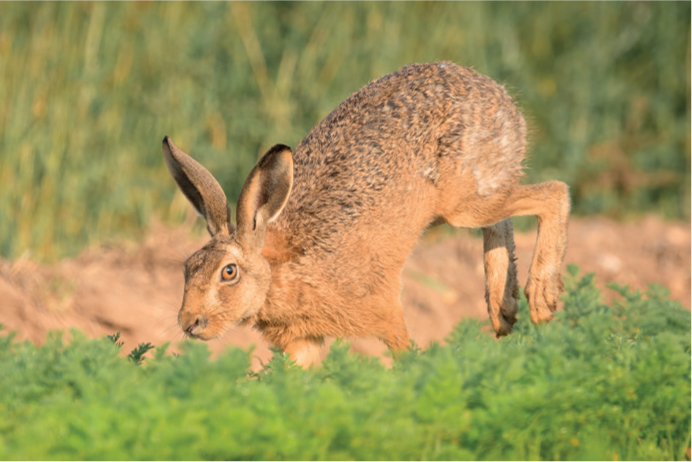
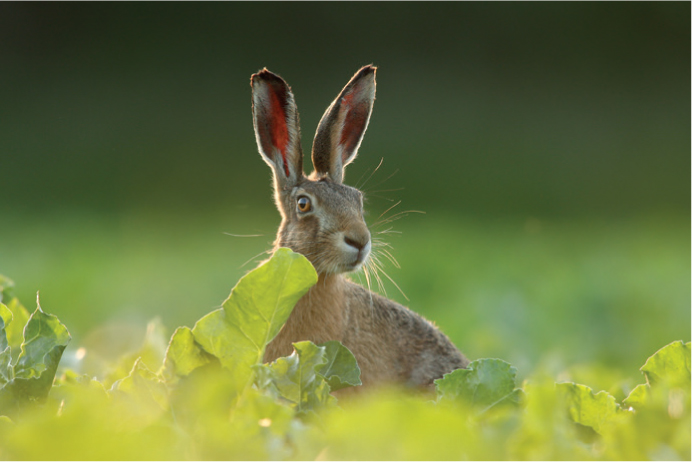
After many painstaking hours of study, plants in a hare’s diet can be identified and the plant’s abundance in its diet can be quantified. The diet can then be compared to the abundance of plants in the habitats used by the hare, to discover whether it is selecting or avoiding particular plants, or just eating them randomly in accordance with their abundance. Researchers have used this method to compare the diet of male and female hares, of hares at different times of year, and of hares in different habitats.

Eating everything twice
Herbivorous mammals have a problem – they cannot digest cellulose, the type of sugar that makes up plant cell walls. To solve the problem, herbivores have bacteria in their gut that digest the cellulose for them by a process known as fermentation. The bacteria convert the cellulose into fatty acids that can be absorbed by the herbivore.
In the ‘foregut fermenters’ (herbivores such as cows, sheep, deer and kangaroos), this fermentation happens before the food reaches the main stomach, either in separate chambers (extra stomachs) or in a modified gut. Some chew the cud – regurgitate partially fermented food and chew it again to improve digestion. In the ‘hindgut fermenters’ (such as elephants, horses, guinea pigs, wombats, rabbits and hares), fermentation takes place in the caecum, a chamber that comes after the stomach. Some, including the lagomorphs and a handful of rodent, marsupial and primate species, maximise their ability to use the fatty acids produced by bacteria during fermentation by eating their own faeces.
During the day, hares produce soft pellets called caecotrophs, made from food on its first round through the digestive tract; these are eaten – a process known as caecotrophy. Hard, round droppings, made from food on its second round, are produced at night. These are only eaten in times of food shortage. The soft caecotroph pellets are rich in protein and vitamins and by eating them, lagomorphs make use of nutrients missed during the food’s first passage through the digestive tract. They are an essential part of the diet: domestic rabbits fed a normal diet but prevented from eating caecotrophs develop malnutrition. When feeding by caecotrophy, Brown Hares sit on their haunches and take pellets directly into their mouths from their anus.
Hares as food
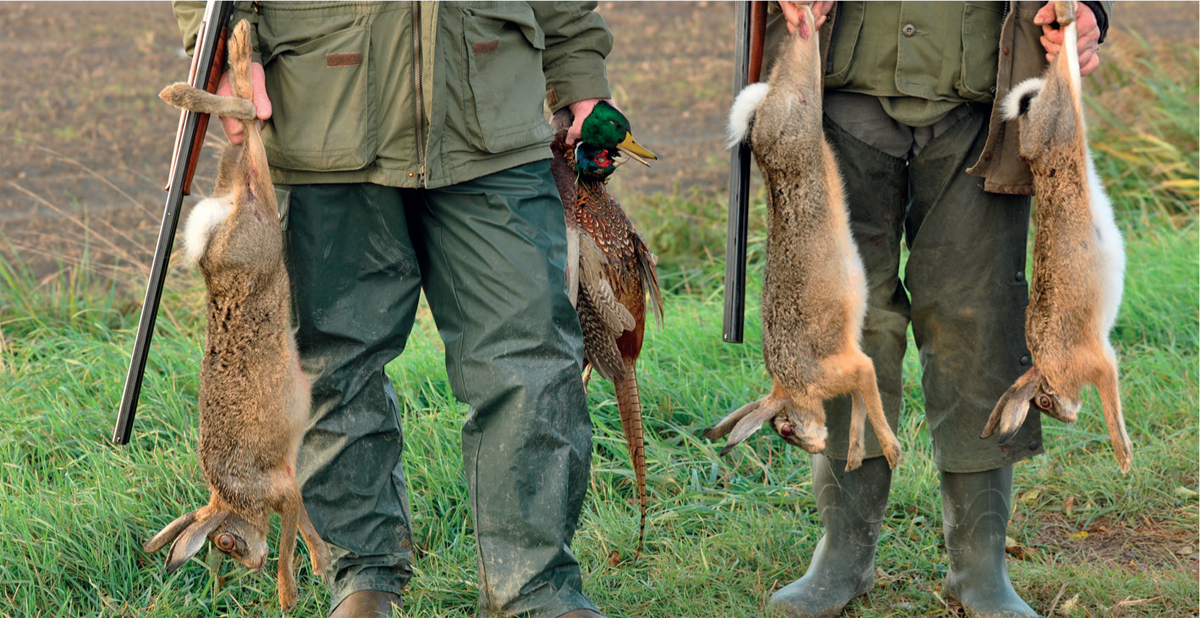
Brown Hares are game animals in most of their geographical range.
It has been estimated that over five million Brown Hares are killed by humans in Europe each year. How this compares to the numbers taken by wild predators is unknown. Animals that eat hares are many and varied, and include mammals and birds of prey. Some are probably only able to take young hares, and some can only scavenge dead ones. For the Brown Hare in Europe and Australia, the Mountain Hare in Scotland and the Irish Hare, the Red Fox is the main predator.

The Red Fox is the principal predator of the Brown Hare.
It may be possible to tell if a dead hare has been eaten by a Fox, but it is impossible to tell whether that hare was actually killed by the Fox, by a car, by disease or by starvation. Thanks to some dedicated researchers who followed almost 800km (497 miles) of Fox tracks in the snow, we know that Foxes do feed on hares that they find dead. Foxes also hunt hares, though of 45 observed attempts at hunting, only three were successful. It must be hard being a Fox: the researchers discovered that to catch one hare, a Fox had to travel on average 263km (163 miles). Maybe only ill, starving or injured hares, or those struggling to run in deep snow, are slow enough to be caught. Leverets are perhaps easier to catch than adult hares.
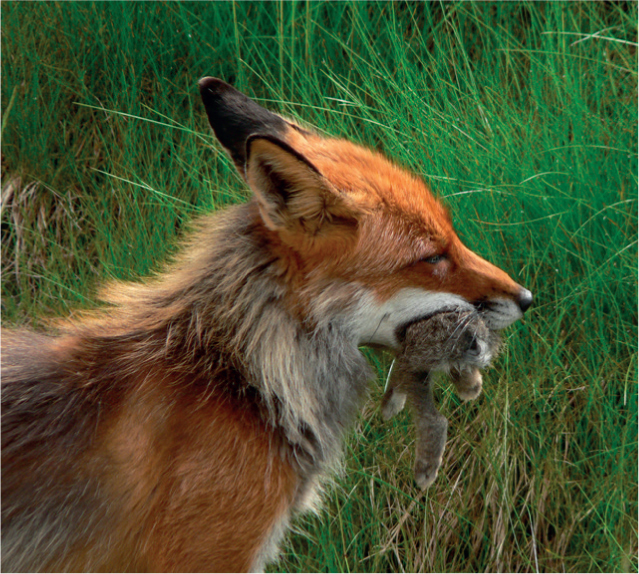
A Fox carrying a young Mountain Hare.
| Animals known to eat Brown, Mountain or Irish Hares throughout their ranges | |
| Mammals | Birds |
| Scottish Wildcat | White-tailed Eagle |
| Domestic/feral cat | Eastern Imperial Eagle |
| Eurasian Lynx | Golden Eagle |
| Red Fox | Hen Harrier |
| Domestic/feral dog | Western Marsh Harrier |
| Wolf | Northern Goshawk |
| Arctic Fox | Rough-legged Buzzard |
| Badger | Common Buzzard |
| Wolverine | Ural Owl |
| Pine Marten | Snowy Owl |
| Beech Marten | Tawny Owl |
| Mink | Long-eared Owl |
| Stoat | Eagle Owl |
| Polecat | Black Kite |
| Brown Bear | Red Kite |
| Peregrine Falcon | |
| Saker Falcon | |
| Raven | |
| Carrion Crow | |

Some important predators of hares, (clockwise from top left): Buzzard, Scottish Wildcat, Golden Eagle and Wolf.
Foxes eat hares all year round, but eat more in winter and spring than in summer and autumn, and more when other food (mainly voles and other rodents) is less common. The Brown Hare can constitute up to 50 per cent of the diet of Foxes. Other predators rely on Brown Hares less. The Buzzard is perhaps the main predator among the birds; though the Golden Eagle also relies on hares, it is more likely to have access to Mountain Hares (which may make up to 50 per cent of its diet) than to Brown Hares.
Foxes are opportunist feeders, so the extent to which they feed on hares is hugely variable. In Sweden, Mountain Hares make up 4–10 per cent of the winter diet of Red Foxes, and 1–14 per cent of the summer diet, depending on vole abundance. Some Foxes rely on Mountain Hares a lot more heavily; they can form up to 94 per cent of their diet. Wolves, Eurasian Lynx, Pine Martens and Arctic Foxes also rely on Mountain Hares at times. Rabbits and hares are consistently identified as the most significant element of the diet of Golden Eagles throughout their geographical range, and are therefore key to the survival of Golden Eagles.
Do predators make a difference?
The biology of hares has been shaped during evolution by constant pressure from predators, so populations of hares are likely to be able to cope with predation. However, numbers of hares may change with numbers of predators, and hares may become more or less susceptible to predation if their habitat changes. Understanding interactions between predators and prey is important for conservation and management.
It is difficult to know how predation affects hare populations, partly because many predators not only catch and kill hares, but also feed on carcasses, so they may be feeding on animals that died by other causes. However, in Scandinavia, when Fox numbers crashed due to disease, numbers of both Brown Hares and Mountain Hares increased. Predation by Foxes can slow down the growth of hare populations and reduce the density of hares; in England, it has been estimated that 80–100 per cent of leverets are taken by Foxes each year. In Sweden, 40 per cent of the leverets born each year are estimated to be taken by predators (mainly Foxes and cats). Mountain Hare numbers can decline when Foxes are around. Even in a part of Poland where Foxes were kept at low levels by gamekeepers, about 10 per cent of leverets were taken, and 18 per cent were taken in an area of higher Fox density.
It is believed that up to 50 per cent of adult hares are killed or eaten by Foxes. Researchers worked out that each Fox eats 30–45kg (66–99lb) of hare each year, suggesting that 10–15 per cent of all hares that die each year are eaten by Foxes. However, game bag data from Germany suggest that habitat improvement has more potential to benefit hares than does the removal of Foxes.
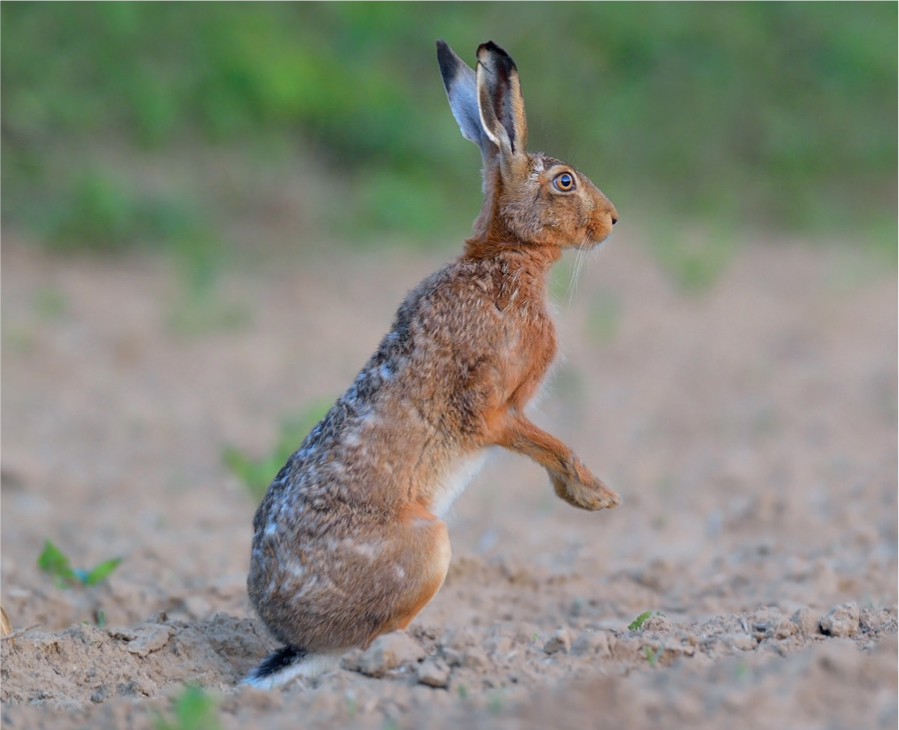
This Brown Hare is standing on its hind legs, perhaps to signal to a predator that it has been spotted.
Avoiding being eaten
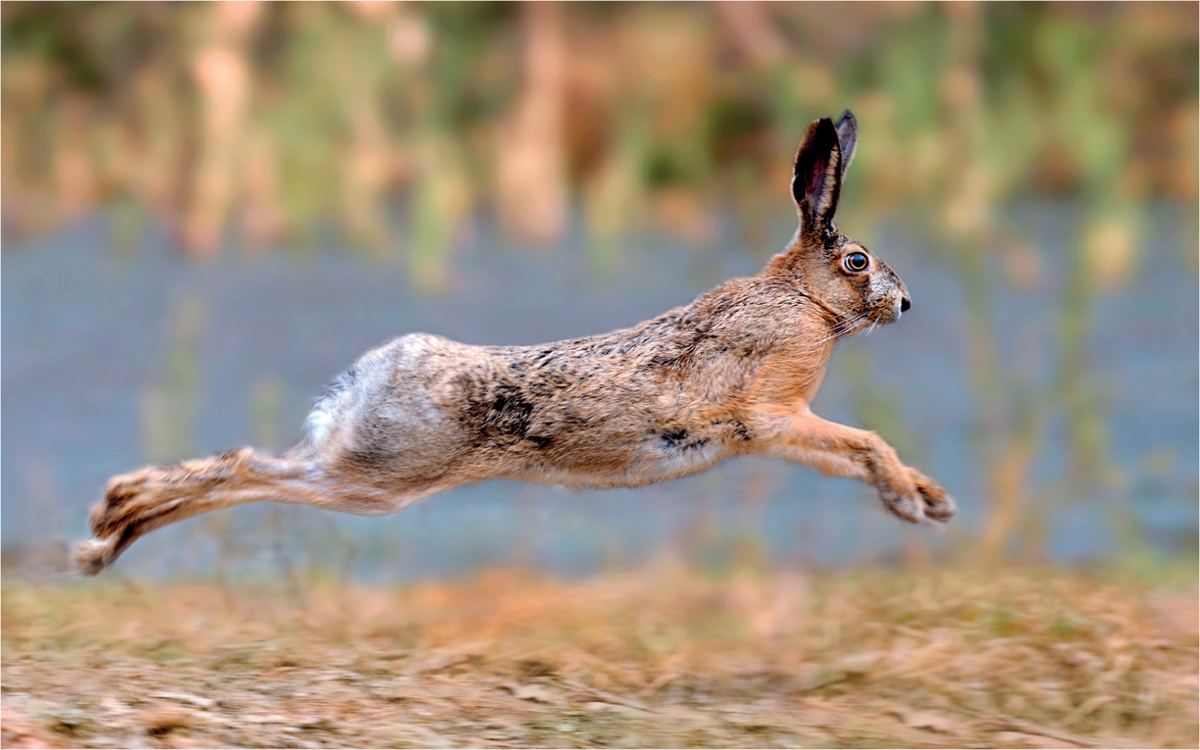
Brown Hares can run faster in short vegetation, so they avoid tall plants when they feel threatened.
Hares sometimes swim to escape predators, and Mountain Hares hide in shrubby places when predators are near. Foxes trying to catch adult hares usually either approach them stealthily while they are resting, or attempt to outsprint them over short distances. Research in the Netherlands shows that when hares are approached by potential predators (in the study, a dog on a lead with two humans), they move faster and further when they are in areas of short vegetation than when they are in taller shrubby vegetation. Hares spent more time in taller vegetation for 24 hours after they saw the ‘predators’ – presumably hiding – so the effect of the disturbance is not short-lived.
Hares are clearly cautious animals. If you are a hare, the best way to avoid being eaten is probably to see the predator before it sees you, and be ready to run. When approached by a Fox or a cat in the open, hares sometimes stand on their hind legs facing the potential predator, to signal to the predator that it has been seen and therefore has little chance of catching them.